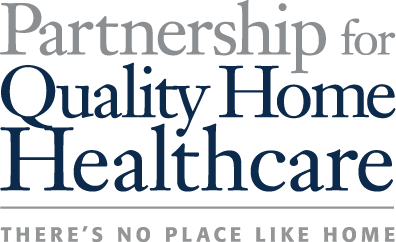May 21, 2014
Home Health Leaders Commend Introduction of Post-Acute Care Reform Bill to Encourage Better Care Coordination, Patient Choice and Quality Care
Posted in: Press Release
Washington, DC – Leaders in the home health community today lauded the introduction of the Bundling and Coordinating Post-Acute Care (BACPAC) Act of 2014 (HR 4673) to establish bundled payments for post-acute care services covered by Medicare. Representatives David McKinley (WV-1) and Tom Price (GA-6) introduced the bill to support the delivery of clinically advanced care in the most cost-effective setting for the nation’s expanding Medicare patient population.
The bill establishes a site-neutral bundled payment model for Medicare post-acute care (PAC) services, which home health leaders regard as superior to across-the-board cuts as the means to generate Medicare program savings by increasing program efficiencies and reducing costly hospital readmissions while securing greater patient choice for Medicare beneficiaries requiring PAC services.
“The BACPAC legislation offers pro-patient solutions founded on years of research and analyses that support more effective and efficient delivery of quality post-acute care services,” stated Eric Berger, CEO of the Partnership for Quality Home Healthcare. “We commend Congressmen McKinley and Price for taking up this important issue to strengthen our nation’s senior care delivery system and look forward to working with them and their colleagues in Congress to advance this important reform legislation.”
The BACPAC model calls for PAC Coordinators and their networks of post-acute care providers to manage a patient care utilizing a 90-day, site-neutral bundled payment initiated on the day of patient discharge from the hospital. By rewarding participants if the total cost of care is lower than the bundle amount, the BACPAC model encourages the delivery of quality clinical care in the most coordinated manner and in the most cost-effective settings that meet patients’ clinical needs.
The BACPAC model aims to significantly reduce hospital readmissions, which are a common cost-driver in the delivery of PAC. Each bundle includes the cost of readmissions, with the PAC Coordinator and provider at risk for the cost of readmissions under the bundle in order to encourage improved care coordination and outcomes to avoid hospital readmissions. The BACPAC model creates a powerful incentive for patients to be placed in the most clinically-appropriate, cost-effective setting for their needs, thereby allowing for efficient fulfillment of the treatment plan.
Most importantly, BACPAC ensures patient choice when receiving PAC by ensuring beneficiaries and their families have the ability to choose their Coordinator and, therefore, their network of providers. In addition, BACPAC empowers patients to select from among the providers within the Coordinator’s network. As a result, the BACPAC model affords extensive patient choice rather than be limited to any particular set of providers based on the site of their hospitalization or other factors.
The proposed legislation stems from the Bundling and Coordinating Post-Acute Care (BACPAC) analysis put forth by the Alliance for Home Health Quality and Innovation in January. The analysis, compiled by Dobson | DaVanzo & Associates, discusses how post-acute care bundled payments provide benefits to patients, providers and the overall healthcare system by controlling costs and allowing for the best possible medical outcomes. Previous research entitled the Clinically Appropriate and Cost-Effective Placement (CACEP) Project, found that given the overlap of patients with similar clinical and demographic characteristics across post-acute care settings, Medicare could achieve savings up to $100 billion over ten years by shifting patients into different settings and reducing spending by varying degrees.
“As our population ages, the need for well managed post-acute care will become a pressing necessity for the sustainability of our healthcare system,” added Berger. “The BACPAC Act of 2014 represents positive Medicare reform that benefits patients, providers and taxpayer alike.”
####
